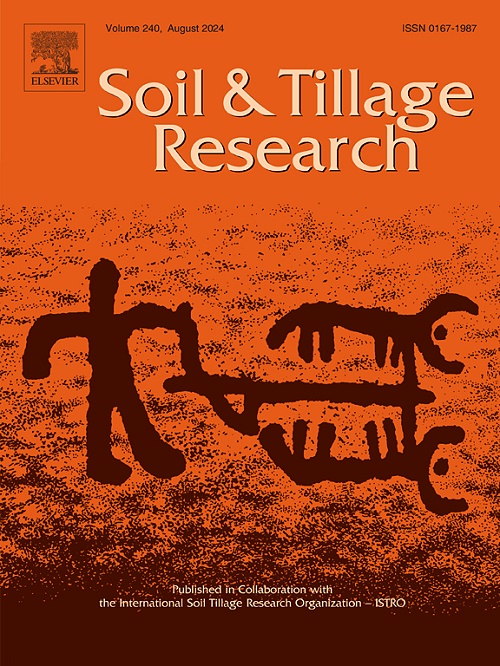Abundant taxa enhanced stability of fungal communities according to reduced nitrogen fertilization
IF 6.1
1区 农林科学
Q1 SOIL SCIENCE
引用次数: 0
Abstract
Excessive nitrogen fertilization has emerged as a significant focus of contemporary agricultural research. Reducing nitrogen fertilization is factually a process of decreasing soil nitrogen resource pulses, elucidating the environmental adaptations and ecological processes of soil fungal communities in this process, and contributions of different sub-communities in it, is a core but less known theme. We investigated soil fungal communities and subcommunities in response to reduction of nitrogen fertilization (fertilization rates were 100 %, 75 %, 50 %, and 0 %, respectively), based on a four-year field plot simulation experiment combining high-throughput sequencing technology. The diversity, community stability, environmental correlation, and co-occurrence network of soil fungal communities was analyzed, combined with concomitant alterations in soil nutrient content throughout the process of nitrogen fertilization reduction, aimed to compare the ecological impact of abundant and rare taxa on the whole soil fungal community. Our results showed that the nitrogen fertilization reduction decreased the diversity (Shannon index) and improved the stability of whole fungal communities. In addition, reduction in nitrogen fertilization leads to an improvement in soil pH (from 4.21 to 6.11) and a decrease in ammonium nitrogen and nitrate nitrogen (94.29 and 130.49 mg/kg, respectively), and abundant taxa showing higher sensitivity but less fluctuations in the breadth of the ecological niche to environmental changes. Reduced nitrogen fertilization resulted in a more complex and stable fungal network structure, while abundant taxa had less variability and higher contributions. These findings highlight the dominant role of abundant taxa in maintaining fungal community stability in facing nitrogen reduction strategies.
丰富的类群增加了真菌群落的稳定性
过量施氮已成为当代农业研究的重要焦点。减少氮肥实际上是土壤氮资源脉冲减少的过程,阐明土壤真菌群落在这一过程中的环境适应和生态过程,以及不同亚群落在其中的贡献是一个核心但鲜为人知的主题。通过4年田间小区模拟试验,结合高通量测序技术,研究了不同施氮量(分别为100 %、75 %、50 %和0 %)下土壤真菌群落和亚群落的变化。通过分析土壤真菌群落的多样性、稳定性、环境相关性和共现网络,结合氮肥减量过程中土壤养分含量的变化,比较丰富和稀有分类群对整个土壤真菌群落的生态影响。结果表明,氮肥的减少降低了真菌群落的多样性(Shannon指数),提高了真菌群落的稳定性。此外,施氮量的减少使土壤pH值从4.21提高到6.11,铵态氮和硝态氮的含量分别从94.29和130.49 mg/kg下降,且丰富的类群对环境变化的敏感性较高,但生态位宽度波动较小。氮肥减少导致真菌网络结构更加复杂和稳定,而丰富的类群变异性较小,贡献较大。这些发现强调了在面对氮还原策略时,丰富的分类群在维持真菌群落稳定性方面的主导作用。
本文章由计算机程序翻译,如有差异,请以英文原文为准。
求助全文
约1分钟内获得全文
求助全文
来源期刊

Soil & Tillage Research
农林科学-土壤科学
CiteScore
13.00
自引率
6.20%
发文量
266
审稿时长
5 months
期刊介绍:
Soil & Tillage Research examines the physical, chemical and biological changes in the soil caused by tillage and field traffic. Manuscripts will be considered on aspects of soil science, physics, technology, mechanization and applied engineering for a sustainable balance among productivity, environmental quality and profitability. The following are examples of suitable topics within the scope of the journal of Soil and Tillage Research:
The agricultural and biosystems engineering associated with tillage (including no-tillage, reduced-tillage and direct drilling), irrigation and drainage, crops and crop rotations, fertilization, rehabilitation of mine spoils and processes used to modify soils. Soil change effects on establishment and yield of crops, growth of plants and roots, structure and erosion of soil, cycling of carbon and nutrients, greenhouse gas emissions, leaching, runoff and other processes that affect environmental quality. Characterization or modeling of tillage and field traffic responses, soil, climate, or topographic effects, soil deformation processes, tillage tools, traction devices, energy requirements, economics, surface and subsurface water quality effects, tillage effects on weed, pest and disease control, and their interactions.
 求助内容:
求助内容: 应助结果提醒方式:
应助结果提醒方式:


